Testimony in the Pandemic: A Lecture by Anuja Ghosalkar and Kai Tuchmann
During the final session of a seminar organised by Harvard and Mahindra Humanities titled Transmedia Arts, Anuja Ghosalkar and Kai Tuchmann presented a lecture performance, “Constructing Testimony in the Times of Pandemic”. Ghosalkar is the Founder of Drama Queen, a docu-theatre group that works around personal histories, methods of documentation, archival heritage and the people. Tuchmann is a dramaturge, director and Visiting Professor at the Central Academy of Drama, Beijing. His practice revolves around docu-theatre, the afterlife of the Cultural Revolution in China and the role of bodies in the face of digitising technologies.
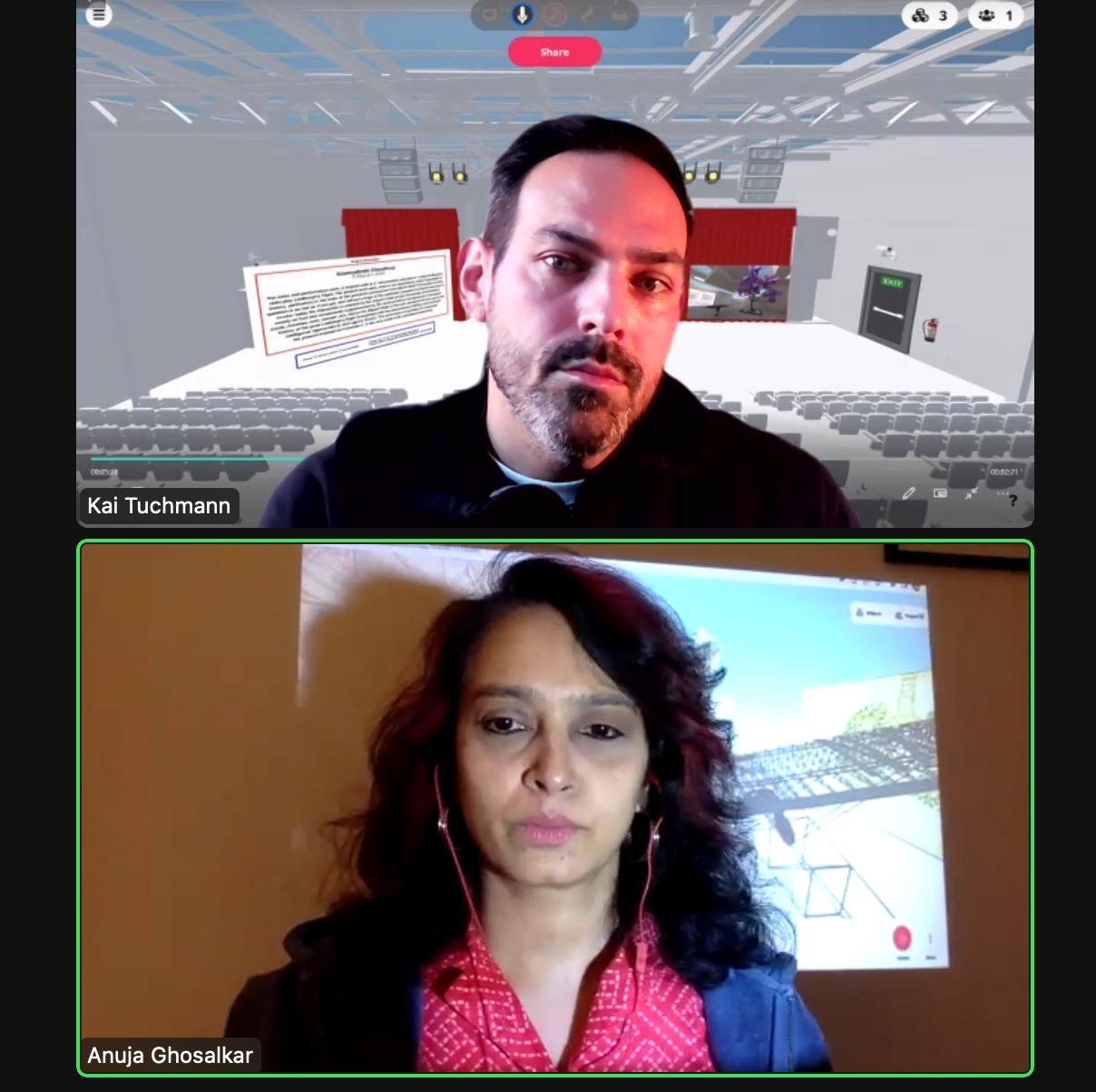
Kai Tuchmann and Anuja Ghosalkar. Image credits: Ranjit Kandalgaonkarn.
Both Ghosalkar and Tuchmann’s work focuses heavily on the documentary and people’s histories, contrasting them with the increasing advent of digital mediums. They collaborate frequently, coming together recently to organise Connecting Realities, a symposium hosted during the Serendipity Arts Festival in 2019, and Look Here is Your Machine, Get In!, a virtual reality production conceptualised during the Covid-19 pandemic in 2020. The latter borrows its title from Bertolt Brecht’s play Lindbergh’s Flight and was conceived as an archive during the Covid-19 pandemic, starting on 25 March and premiering on 16 December.
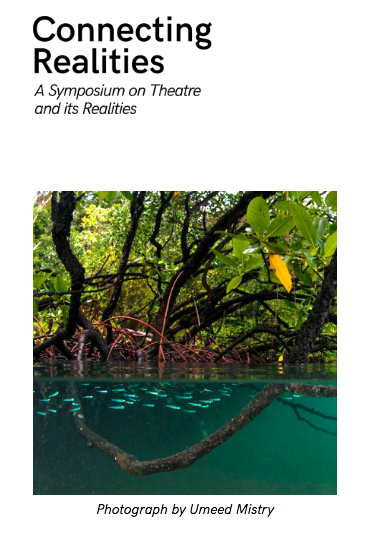
Connecting Realities at the Serendipity Arts Festival in 2019.
Charles Lindbergh was the first man to take a flight across the Atlantic from New York to Paris, changing the ideas of movement and mobility for the rest of the world. Brecht’s play is often considered the first production of media theatre with a radio as the main co-actor of the play. The playwright considered the radio as a tool to popularise revolutionary ideas, given its accessibility to the public. However, this was shattered four months later, as it came to be weaponised by the Nazis to further spread propaganda. Lindbergh was also considered to be a Nazi sympathiser, which prompted Brecht to change the title of his play to The Flight Across the Ocean in 1949. He disassociated himself completely from Lindbergh, removing even the mention of the aviator’s name from the dialogue of the play.
Tuchmann and Ghosalkar’s production takes Brecht’s play and its subsequent changes as the starting point of their production. They quote Brecht, setting up the analogy between radio, television and current forms of mass media. The duo also examined how accessibility to the internet during the pandemic further exposed the stark differences across social classes. This prompted them to question how artists grapple with the effects of such divisions, situating their practice in emerging forms of mass media.
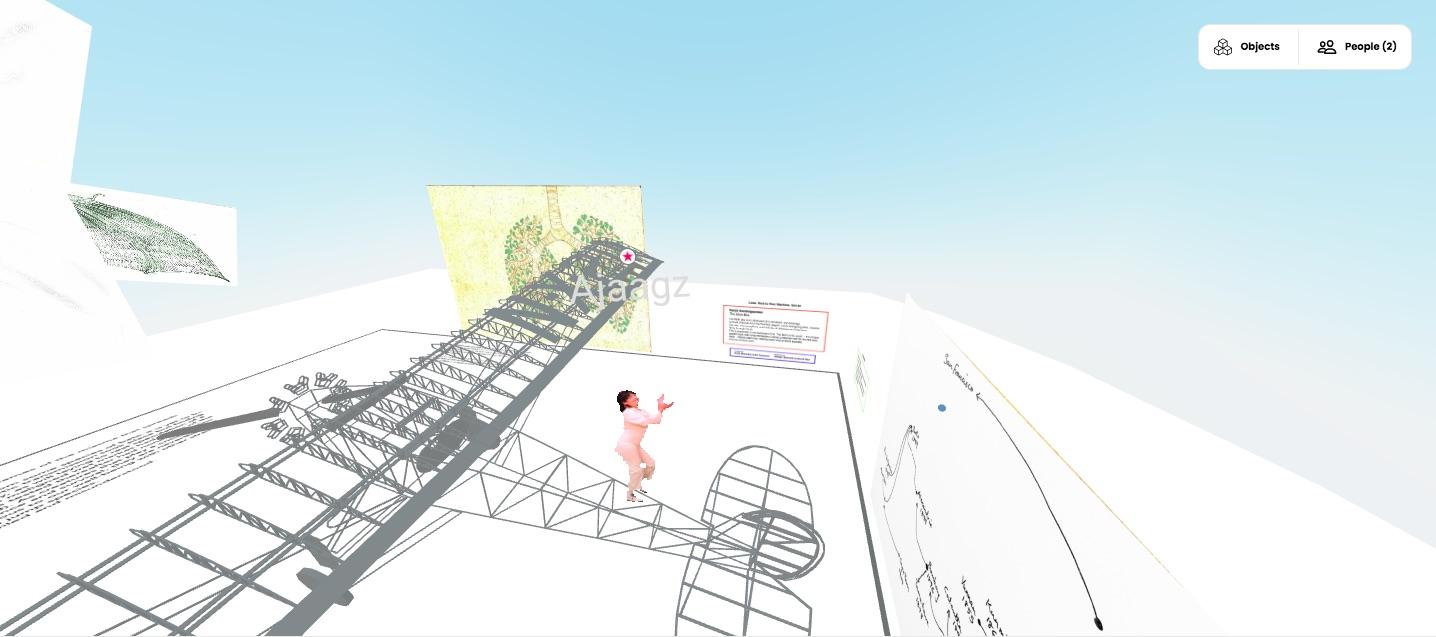
Look Here is Your Machine, Get In! by Anuja Ghosalkar and Kai Tuchmann. Image credits: Ranjit Kandalgaonkar.
In the early months of 2020, right before the Covid-19 pandemic prompted a nation-wide lockdown in March, India was at the peak of one of its biggest mass movements in recent history, the anti-CAA protests. Look Here is Your Machine, Get In! finds its point of departure in the changing reality during the pandemic and what Brecht’s failed hope for mass media means today. The artists responded to Brecht’s imagination in digitally curated VR rooms, with the audience appearing as avatars. The duo invited nine artists to record and perform their testimonies in response to the digital divide.
Ghosalkar and Tuchmann presented on four of the nine virtual hubs that were created on the VR platform, Mozilla Hubs. They showcased video documentation of each artist as they performed in a virtual hub room created specifically for them. Soumyabrata Choudhury’s virtual hub, “A Migrant’s Walk”, delved into the idea of existence and survival in relation to the Citizen Amendment Act (CAA) and the state’s obsessive quest for procuring documents. The work also invoked the figure of the migrant worker, stranded in cities as the Covid-19-induced lockdowns were initiated across the country. Left without a livelihood or the means to return home, the migrants were forced to walk back home, a journey of thousands of kilometres on foot. This walk was an act of social transgression by the survivor and a commentary on the policies during the pandemic as well as the role of social media in heightening the sense of dystopia with half-baked information.
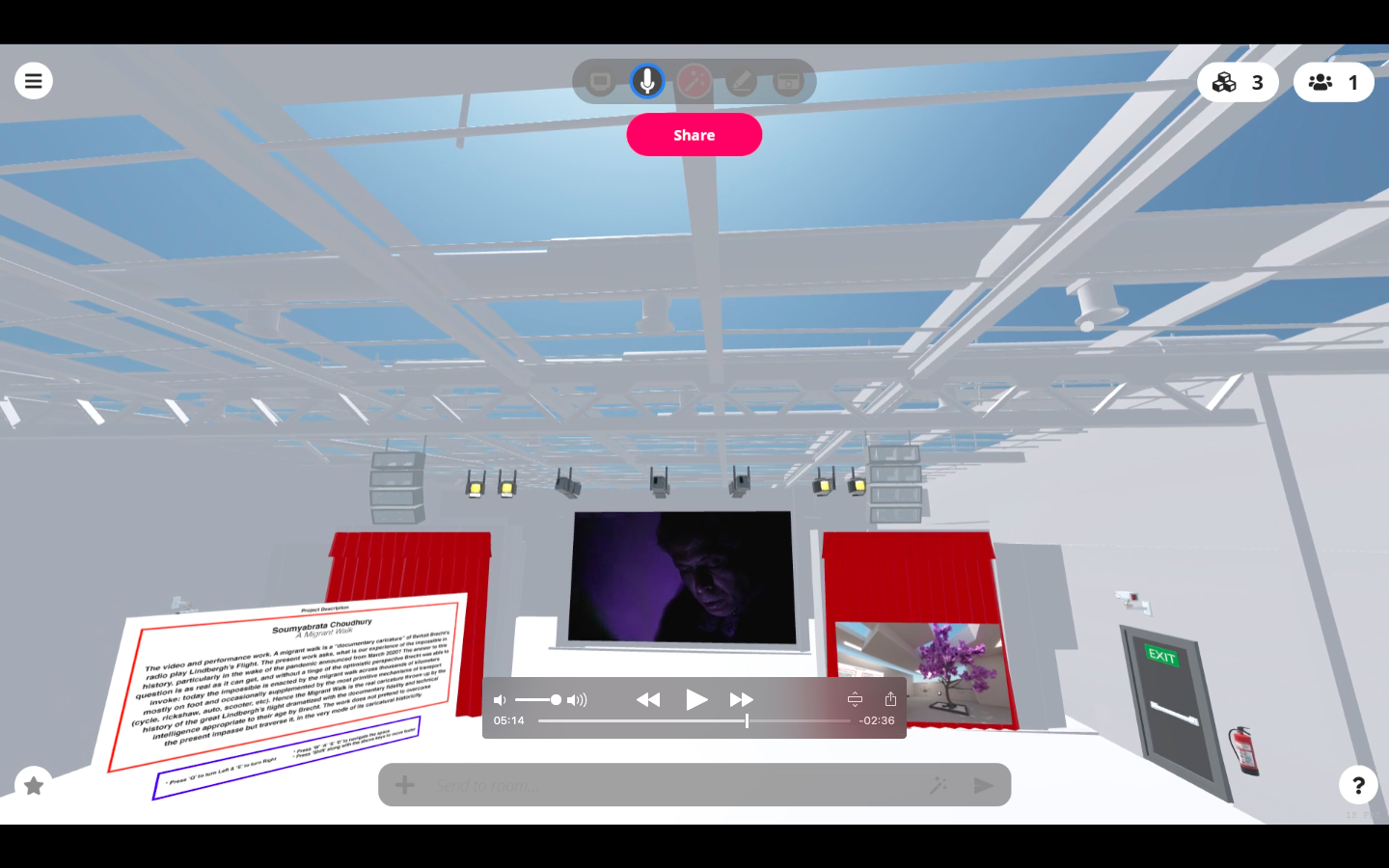
A Migrant's Walk by Soumyabrata Choudhury.
Yalgaar’s room titled “Article 51-AH” commented on scriptures and superstitions, prompting the audience to think about a godless world. The migrant farmer thus became an important aspect of their piece. The work was placed in a virtual forest, which the virtual avatars of the audience could traverse. Yalgaar’s work juxtaposed the techno-optimism that underlines Brecht’s play.
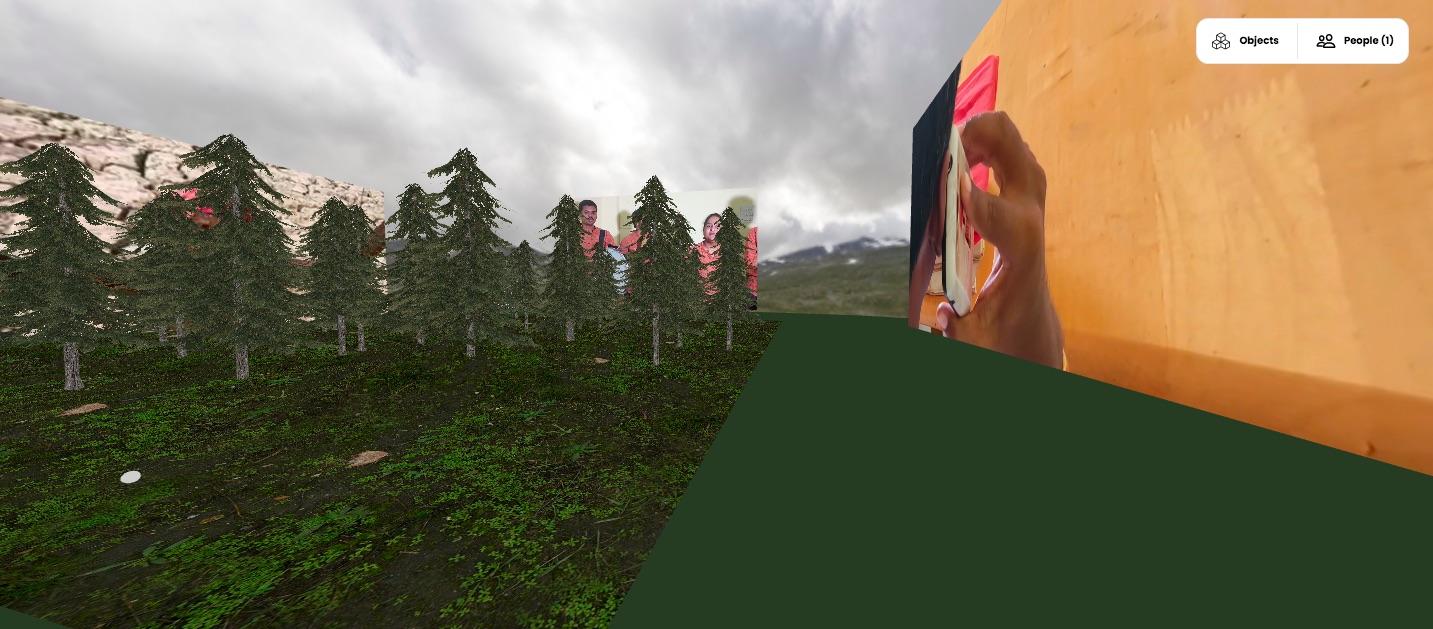
Yalgaar's performance setup.
Zuleikha Chaudhari re-enacted Subhash Chandra Bose’s broadcast in “Rehearsing Azad Hind Radio”, highlighting how radio became a medium of two-way communication. The work also reflected on Bose’s close ties with the Nazi party in his fight for India’s freedom, emphasising the ideological idiosyncrasies of technology. Amitesh Grover’s work invited the audiences to listen to a broadcast from the future and focused on the air-speech with a dialogue between him and an invisible partner.
Ghosalkar and Tuchmann’s productions make digital and virtual mediums an important point of discussion. They treat virtual reality as an infrastructure for presentation and a carrier of documents, emphasising the fact that the nature of the documents also changes with the way one accesses them.
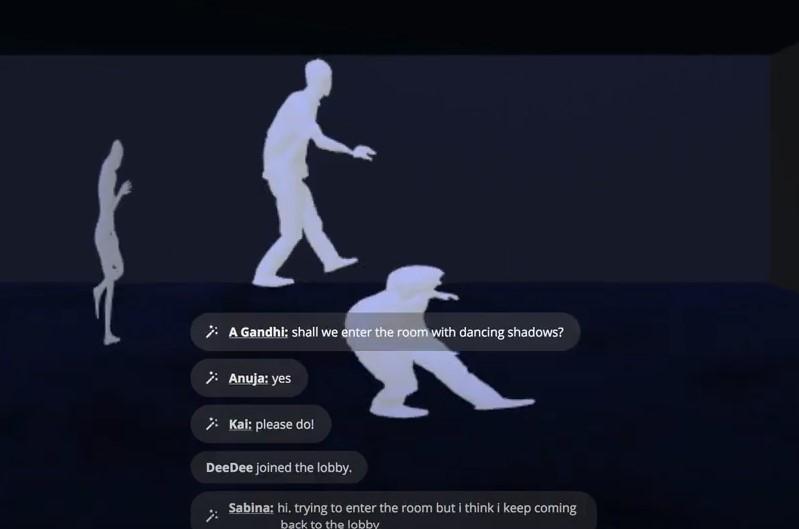
Virtual Avatars for the Hubs Room
The works showcased by Ghosalkar and Tuchmann during their performance engaged with the idea of self-documentation in various ways. The artists’ response to the panic around documentary and mass media raises even more compelling questions about the future of the form and if it can exist as an infrastructure for presentation, as Ghosalkar and Tuchmann suggest. As our world slowly moves towards incorporating artificial intelligence in everyday tasks, it is imperative to locate these performances as points of departure for larger questions around digital mediums and their future in art practice.
To learn more about Ghosalkar's practice, read her fictional works on our platform.
All images courtesy of the artists.




